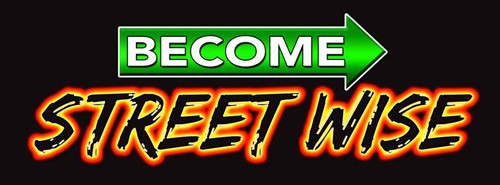What does the Sandy Hook Massacre Mean to you?
The Sandy Hook Elementary School was possibly the least likely place for a massacre to occur. The lesson learned is that massacres could occur anywhere, not just schools, at any time, and they have. Here is what the experts have to say, “Gone are the times when some areas of the country seemed immune to violence. Now it can happen at any time, to any of us, anywhere, from small towns to large cities to back country roads (Law and Order, May 2011).” We have seen shootings in public schools, colleges, malls, movie theatres, parades, houses of worship, concerts and the list goes on.
Even more frightening is that a shooting in a crowded public place can easily trigger a panic riot. This could result in even more casualties than the shooting itself. So what is one to do?
Each person must take responsibility for their own safety. Counting on someone else being around to help during a crisis is like playing the lottery. Being alert in the street is a must in order to have any chance of avoiding almost any criminal act. But this might take some work. Therefore, walking around with a cell phone plugged into your ear or earphones pumping music into your head are distractions that can no longer be considered safe. Most people understand the concept of “defensive driving” so let’s take that principle and apply it to walking around in the street. We can call it “Defensive Street Walking.” Could you be more specific? Yes I can.
Caught in a stressful life and death situation, we are all genetically wired to react using one of 4 responses I will call the 4 Fs, fight, flight, faint or freeze. At this point, quality training will determine how we tweak these four basic choices to make them more effective and it can improve the chance of surviving. If a shooter is less than 10 feet away, fighting or attacking the shooter might be the best response. If the shooter is reloading, or if it is possible, throw something at his head, this might enable one to close the gap without injury. If further away, flight might be the best choice. However, just running is not as good as picking the best direction to run. Paying attention to one’s surrounding might be helpful in selecting the best direction to run. If possible, running for the closest exit might be best. Another choice is to run for cover. Cover will both conceal you and provide protection from a shooter’s bullets which can’t penetrate. When cover isn’t available, concealment is another option. While this might hide you, it won’t protect against bullets being fired at you. Freezing and fainting are somewhat similar. In both cases, one becomes motionless and an easy target. Lying on the ground motionless i.e. playing dead has worked in some instances.
As you can see there are many variables to consider, choices to be made and little time to do it. Some of the variables might include, how many “bad guys” are involved? Where is the closest exit or cover? What is your health and fitness level? Are you with others i.e. girlfriend, wife or children? How close are you to the shooter and what weapon is being used? Decisions must be made quickly or lives could be lost. Remember the 100% rule. No plan of action will work all the time. However, it is far better to implement a plan than to do nothing. One must realize because of all the variables, this space is not adequate to address all these issues and they should be discussed in detail.
Now back to the extremely important point of being alert. Being alert allows one to see possible threats in enough time to take preventative action. There are often clues that might provide an early warning that something dangerous is about to happen. If one is trained to recognize them, these can be seen on a conscious level. Or if one is not trained to recognize them, they might be perceived on an unconscious level. This unconscious feeling is something suggested by Gavin de Becker in his book the “Gift of Fear.” While being trained would afford a better chance, even the untrained could be successful if they followed “their gut feeling.”
Anyone that ignores personal safety training does so at their own risk. I was recently told by one religious person not to worry because G-d watches over us. Who watched over the 26 children that lost their lives at Sandy Hook Elementary School or any of the other shootings? I had to remind him of the saying that, “G-d helps those who help themselves.” Stay Alert and Stay Safe!
Short Bio About Professor Arthur Cohen B.A., M.A.
Author, educator, college professor, speaker, personal safety and self-defense expert. Professor Cohen is a nationally and internationally known martial artist and personal safety expert and is sometimes referred to as “the Streetwise Professor.” He currently designs and teaches programs for The Center for School and Personal Safety Research. Because of his innovative work, for the past five decades, in the areas of personal safety, school safety, police defensive tactics and martial arts, he is often found as “instructor to the instructors.” Other credentials include:
- A B.A. from Hunter College and an M.A. from Stony Brook U.
- A retired educator, 33 years in the classroom, and worked as an adjunct professor for Alfred University, teaching two graduate courses on school violence prevention.
- Charter member of The International Law Enforcement Educators and Trainers Association (ILEETA)
- Author of Surviving a Massacre, Rampage or Spree Killing, Paladin Press 2010.
- Member of Who’s Who Among America’s Teachers, Who’s Who in Law Enforcement Trainers and Who’s Who in America’s Martial Arts.
